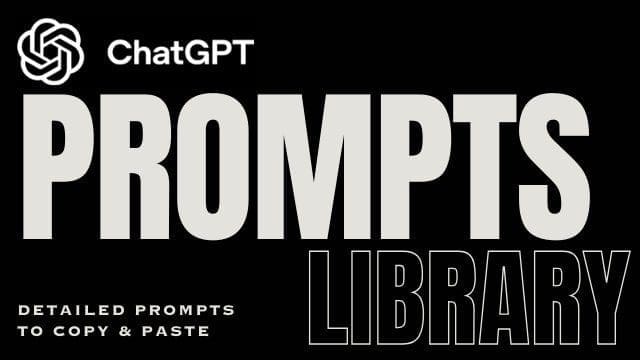AI Learning Centres:
- AI – Learn The Basics
- Get The Most From ChatGPT
- Branding in The Age of AI
- AI for Client Experience
- AI For Prospecting
- AI For Marketing
- AI For Listings & Ads
- Team Adoption of AI
- AI For PM
- AIO & Generative Search
- AI For Operations & Efficiency
- AI For Market Research & Analysis
- AI Ethics, Privacy & Compliance in Real Estate
Digital Marketing & Social Media Learning Centres:
Guides & Downloads

Using AI to Detect Micro-Trends in Rental Yields
Small, week-to-week movements often signal bigger shifts ahead. Spotting them early lets you:
adjust rents before the market moves;
guide investors towards high-return suburbs; and
protect landlords’ income when vacancy rates start to climb.
CoreLogic’s rental market updates show yields can slide or lift within just a few weeks, long before yearly averages catch up.
What is a “micro-trend”?
Think of it as any change in rental yield that appears over days or a few weeks instead of months or years. For example:
A sudden 0.1 % rise in a suburb’s gross yield after a new university term starts.
A 0.2 % dip across similar one-bedroom units when two new buildings settle.
Weekend spikes in furnished-unit rents during a major event.
Detecting these ripples early gives property professionals a head-start on price reviews.
Where does the data come from?
You already have most of it:
Property portals (Domain, Realestate.com.au, PropTrack) – daily advertised rents and asking prices.
CoreLogic’s Daily Rent Index – suburb-level changes several times a week.
Your own CRM – agreed rents, vacancies, upcoming lease renewals.
Combine these sources and you have the raw feed an AI system needs.
How AI spots the signal in the noise
Ingest high-frequency data – pull fresh portal listings every 24 hours.
Clean & normalise – group by property type, bed-count, suburb, and filter obvious errors.
Apply anomaly-detection models – isolation forests or Prophet can flag yield changes bigger than normal weekly swings.
Cluster suburbs – unsupervised learning groups areas that move together, revealing pockets of resilience or risk.
Visualise & alert – dashboards highlight shifts above your chosen threshold and trigger email or SMS alerts.
AI platforms can process millions of rows overnight – something a human spreadsheet cannot match.
A simple workflow you can copy
Step 1 – Daily data scrape: Use an API (or even a Chrome extension) to pull rent and price data into Google BigQuery.
Step 2 – Auto-cleanup: Schedule a Python script to remove duplicates and convert weekly rents to annual figures.
Step 3 – Yield calculation: Divide annual rent by advertised price, then store the percentage.
Step 4 – AI detection: Run an anomaly-detection notebook each night; flag any suburb with a ±0.15 % change week-on-week.
Step 5 – Dashboard & email: Push results to Looker Studio and send a “Micro-Trend Alert” to your property management team each morning.
Total setup cost: mostly your time plus a pay-as-you-go cloud bill.
Practical wins for property professionals
Rent reviews: Use flagged suburbs to justify mid-lease increases or defensive renewals.
Investor briefings: Provide clients with fresh suburb heat-maps showing where yields are accelerating.
Portfolio rebalancing: Recommend selling low-yield assets identified by downward micro-trends.
Marketing focus: Share positive micro-trends on social channels to attract landlords seeking better returns.
AI tools worth exploring
| Tool | Snapshot |
|---|---|
| PropTrack Market Trends API | Pull daily advertised rents, prices, and vacancy rates across every postcode, feeding your own dashboards or notebooks for live analysis. |
| Propity AI Suburb Analysis | Web app that scores any suburb on rental yield, vacancy, and growth potential in seconds – handy for quick client consults. |
| HouseCanary Rental Forecasts | Uses US-style neural nets adapted to Australia, predicting 12-month rent changes at a block level for sharper pricing decisions. |
| Google BigQuery ML | Lets you build anomaly-detection and time-series models right inside your data warehouse – no separate server needed. |
| Looker Studio + Alerting | Free visual layer that emails you when a metric passes any rule you set, perfect for those yield-shift triggers. |
Getting started checklist
☐ List the suburbs you manage and pull three months of daily rent + price data.
☐ Calculate baseline yields and their normal weekly range.
☐ Pick an AI method (Prophet or isolation forest) and test on last quarter’s numbers.
☐ Set a ±0.15 % alert threshold to start.
☐ Share early insights with landlords – use plain graphs, not code!
☐ Review and tighten thresholds after two rent cycles.
By combining your own data with smart, off-the-shelf AI tools, you can spot rental-yield micro-trends days, even weeks before they show up in traditional reports.
Author – Ken Hobson.






